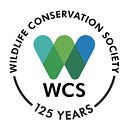WCS 3-Sentence Science
Counting the Uncounted
June 6, 2019
Each year, Wildlife Conservation Society scientists publish more than 300 peer-reviewed studies and papers. “WCS 3-Sentence Science” is a regular tip-sheet — in bite sized helpings — of some of this published work.
Here we present the work of the WCS Cambodia senior technical advisor Simon Mahood on measuring wildlife population abundance:
- Though abundance is a fundamental measure in ecology and environmental management, detecting all individuals in a population is usually impossible when monitoring, so estimates of abundance must account for imperfect detection.
- Researchers developed the first method designed specifically to estimate population abundance from simultaneous counts of unmarked individuals over multiple sites, testing the methodology on three species of critically endangered vulture species in Cambodia.
- They found that the new approach works best when existing methods are expected to perform poorly (few sites, large variation in abundance among sites), and when individuals may move among sites between sampling; and they believe the approach will be useful in particular for simultaneous surveys at aggregation sites, such as roosts.
Study and Journal: “Simultaneous-count models to estimate abundance from counts of unmarked individuals with imperfect detection” from Conservation Biology
WCS Co-Author(s): Simon Mahood , Senior Technical Advisor, WCS Cambodia
For more information, contact: Stephen Sautner, 718–220–3682, ssautner@wcs.org.
